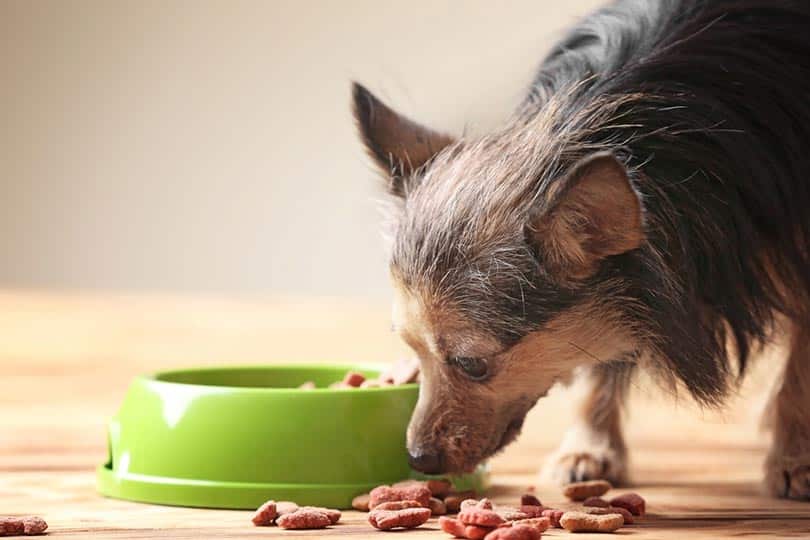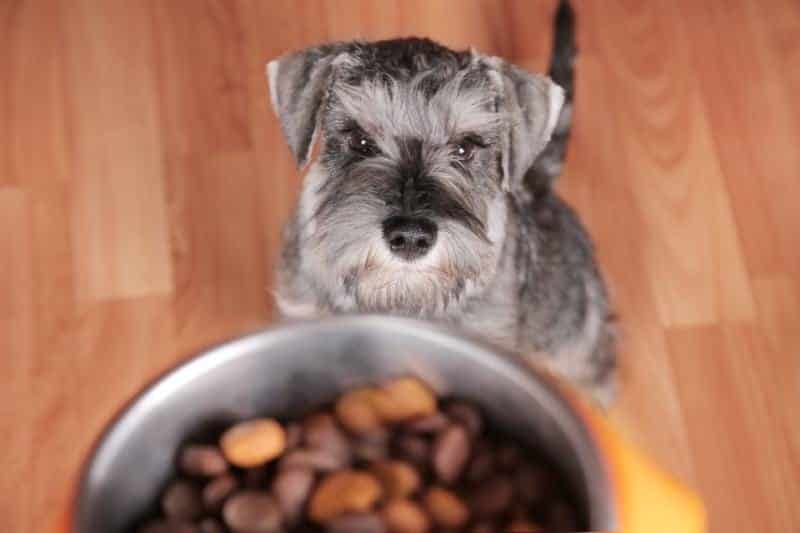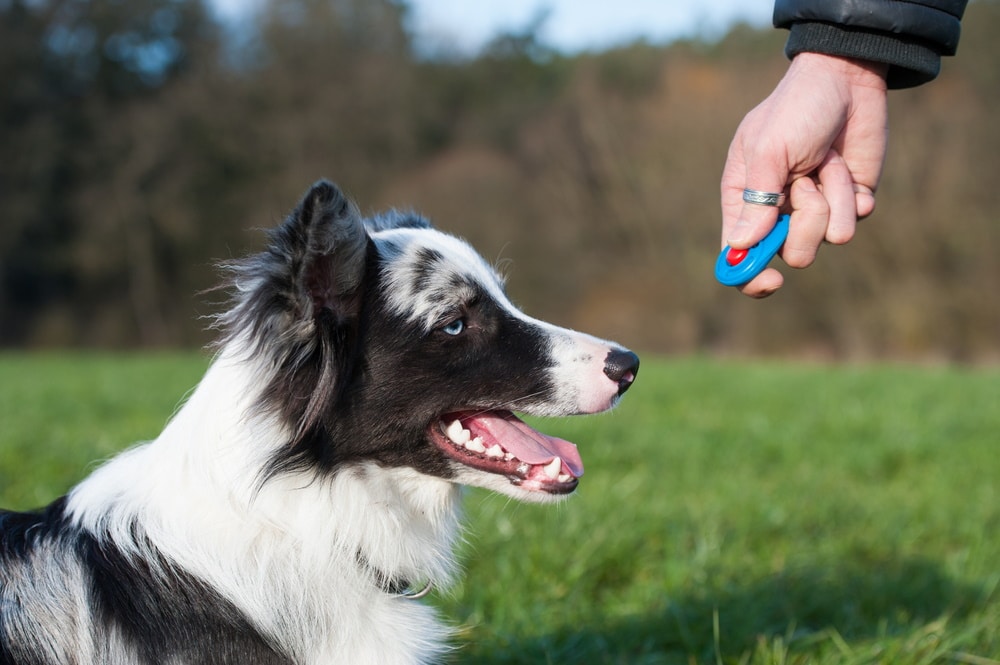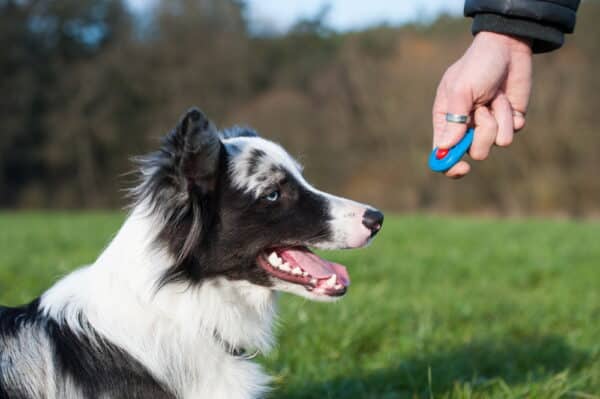When I’m clicker training dogs, I use food — a lot — to train new behaviors. Often, my clients are skeptical when we begin working together, saying “My dog isn’t really food-motivated. Do we have to use food?” While you don’t have to use food to train a dog, there are a few reasons it tends to work well.
Why Use Food?
1. It’s fast. Small and soft treats (the stinkier the better!) work best for training because they are quickly consumed, and then you’re on to the next repetition. Hard, crunchy, or large treats (biscuits, kibble, etc.) can also work well, but they slow down your Rate of Reinforcement (how many reinforcements your dog earns in a given period) and therefore slow down learning, because dogs spend too much time chewing and not enough time doing.

2. It’s a primary reinforcer. Dogs need food to survive!
3. There are many choices. From kibble to canned dog food to bits of sandwich meat, Cheerios, and hot dogs, there are many reinforcement options within the family of “food,” and our choices will affect our training results. I tell clients and seminar attendees that all of the treats should have jobs. They can be used to increase or decrease arousal (and focus), to reset the dog for the next reinforcement opportunity, to set the dog in position, etc.
4. Food makes feel-good stuff happen in your dog’s brain. Without going into a neurochemistry lesson, food delivery, when combined with clicker training, can trigger the release of dopamine and activate the seeking system. (For more information, check out Karen Pryor’s Reaching the Animal Mind, Patricia McConnell’s For the Love of a Dog, or, if you’re feeling particularly ambitious, Jaak Panksepp’s Affective Neuroscience: The Foundations of Human and Animal Emotions.)

5. It’s fun! Most people (the type I’d want as clients, anyway) like doing nice things for their dogs. Many of them already give their dogs treats, but if we can make the delivery of those treats contingent on good behavior, we are likely to see a dramatic improvement in the dog’s behavior and the relationship between the dog and her people.
A big myth about positive reinforcement training is that food is the only tool we use. It’s important to keep in mind that a positive reinforcer is anything an animal is willing to work to obtain, and that treats are only one of many options.
While I find food to work best for training new behaviors (imagine if you walked your dog around the block after each click — your Rate of Reinforcement would slow down dramatically!), you absolutely can and should expand your reinforcement universe as you and your dog expand your own skill sets.
If Not Food, Then What?
- A cool, fresh bowl of water on a sunny day
- A run with your dog
- A game of tug or fetch
- Opportunity to chase a flirt pole or lure
- Chance to stick his face in a gopher hole and sniff (Mokie loves this one!)
- Safe and controlled opportunity to chase prey
- Chance to jump in the water for a favorite stick or toy
- A butt scratch
- Opportunity to sniff freely
- A chance to remove the leash
- A walk
- Opportunity to interact with a favorite person or doggie playmate
- Opportunity to greet new people and/or dogs
- Opportunity to enter the dog park
- Opportunity to get out of the crate
- A new toy
- Massage
- A car ride
- Opportunity to dig a hole
Not all dogs will find all of these things reinforcing, but carefully observe your dogs (what gets her going?) and be ready to take advantage of those opportunities by integrating them into your training plan.
I’d love to hear from you about things that your dog finds reinforcing, food or otherwise. Let me know in the comments!
Featured Image Credit: Dora Zett, Shutterstock









